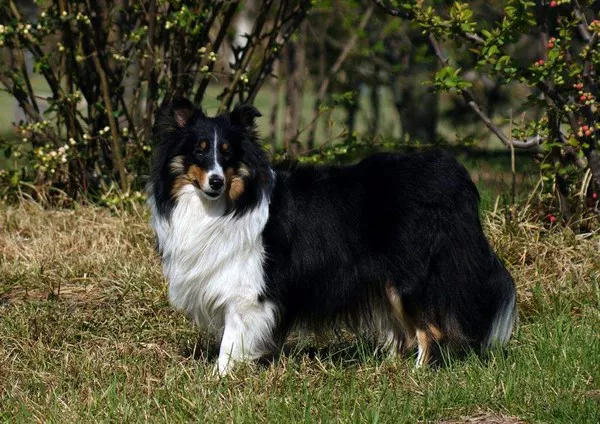Sulcata tortoises, also known as African spurred tortoises, are one of the most recognizable tortoise species worldwide. Native to the southern edge of the Sahara Desert in Africa, these tortoises have gained popularity among reptile enthusiasts and pet owners alike. Despite their widespread recognition, many people wonder: are sulcata tortoises rare? This guide explores the factors that determine their rarity, including natural habitat, breeding, availability in the pet trade, and conservation status.
Natural Habitat and Distribution
Sulcata tortoises are naturally found across several countries in the Sahel region, including Chad, Sudan, Ethiopia, and Mali. Their habitat consists mainly of semi-arid grasslands and savannas where they burrow to escape the extreme heat and dryness. In the wild, their population density varies significantly depending on environmental conditions such as rainfall and vegetation availability. Although their range is quite broad, habitat degradation and human activities have impacted their natural populations, making them less common in certain areas.
Factors Influencing Sulcata Rarity
The rarity of sulcata tortoises depends on multiple factors. Here are the key influences:
- Habitat loss: Expansion of agriculture, urbanization, and climate change have reduced the natural habitat available to sulcatas.
- Illegal trade: Sulcatas are often sought after in the exotic pet market, which has led to poaching and illegal exports.
- Breeding challenges: While captive breeding is established, it requires expertise and time, limiting widespread availability.
- Conservation efforts: Some regions have protection laws and breeding programs to help sustain wild populations.
Together, these factors impact whether sulcata tortoises are considered rare in the wild or readily available through captive breeding.
Sulcata Tortoises in Captivity
In captivity, sulcata tortoises are not considered rare due to the significant number of breeding programs around the world. Many zoos, reptile breeders, and private owners maintain captive populations. These tortoises are known for their impressive size and gentle demeanor, making them popular pets. However, their size, lifespan (often exceeding 50 years), and care requirements mean they are not suitable for all pet owners, which indirectly limits demand and availability.
Captive breeding programs have also helped reduce pressure on wild populations by providing an alternative to wild-caught specimens. That said, responsible breeding and ethical sourcing are crucial to ensuring that sulcatas remain abundant and healthy in captivity.
Legal and Conservation Status
The sulcata tortoise is listed under Appendix II of the Convention on International Trade in Endangered Species (CITES). This means international trade is regulated but not banned outright. The goal is to prevent overexploitation while allowing sustainable trade under strict controls.
Conservation groups and governments are working to preserve the natural habitats of sulcata tortoises and educate the public about responsible ownership. These efforts help maintain healthy wild populations and reduce the risk of the species becoming endangered.
Why Some People Think Sulcatas Are Rare
Despite their availability in captivity, sulcata tortoises are sometimes perceived as rare due to several misconceptions:
- Large size and specialized care: Their growing needs can make them seem inaccessible to many potential owners.
- Long lifespan: Commitment to decades of care may deter casual pet owners.
- Illegal trade awareness: News about poaching and smuggling can create an impression that they are scarce.
- Wild population decline: Localized habitat loss has decreased numbers in certain regions, leading to regional rarity.
Understanding these aspects helps clarify why sulcatas are often mistakenly seen as rare despite their relative abundance in the pet world.
How to Identify a Genuine Sulcata Tortoise
When purchasing or adopting a sulcata tortoise, ensuring the animal is genuine and ethically sourced is critical. Authentic sulcatas have distinct features:
- A large, domed shell with characteristic spurs on the rear legs.
- Rough, scaly skin that helps them adapt to arid environments.
- A strong burrowing behavior, often creating deep tunnels to escape heat.
- A size that can exceed 24 inches in length as adults.
Always request documentation proving captive breeding or legal acquisition to avoid supporting illegal trade.
Caring for a Sulcata Tortoise
Due to their unique requirements, sulcata tortoises need specialized care, which can affect their perceived rarity as pets. Key care considerations include:
- Space: Sulcatas grow very large and need ample outdoor space or a large enclosure.
- Diet: They primarily consume grasses and hay, with occasional leafy vegetables.
- Temperature: They thrive in warm climates and require controlled environments in cooler areas.
- Burrowing: Providing substrate for natural digging behavior is essential for their well-being.
- Longevity: Owners must be prepared for a long-term commitment, often decades.
Proper care ensures the tortoise’s health and longevity, making it a rewarding but demanding pet.
Breeding Sulcata Tortoises
Breeding sulcata tortoises in captivity is possible but not simple, which limits their rapid population increase and availability. Successful breeding requires:
- Mature adults, generally 10 years or older.
- Controlled temperature and humidity to simulate natural conditions.
- Adequate nutrition and space for nesting.
- Time for eggs to incubate, typically 90 to 120 days.
Breeders who meet these conditions contribute to the sustainable availability of sulcatas for enthusiasts worldwide.
Conclusion
Sulcata tortoises are not rare in captivity due to successful breeding and their popularity as pets. However, habitat loss, illegal trade, and specific care requirements impact their wild populations and public perception. Understanding these complexities helps clarify why sulcatas may seem rare in some contexts but are generally accessible to responsible pet owners and breeders. With ongoing conservation efforts, these remarkable tortoises are likely to remain a thriving species for years to come.
FAQs
Q1: Are sulcata tortoises endangered?
No, sulcata tortoises are not currently classified as endangered, but their wild populations face threats from habitat loss and illegal trade. They are listed under CITES Appendix II, meaning trade is regulated.
Q2: How large do sulcata tortoises get?
Adult sulcata tortoises can grow up to 24-30 inches in length and weigh over 100 pounds, making them one of the largest tortoise species in the world.
Q3: Can sulcata tortoises live indoors?
Due to their size and need for natural sunlight and burrowing space, sulcata tortoises are best kept outdoors in a suitable enclosure. Indoor care is challenging and not recommended for long-term housing.
Q4: How long do sulcata tortoises live?
Sulcata tortoises can live 50 years or more with proper care, sometimes reaching 70 or even 100 years in exceptional cases.
Q5: Is it legal to own a sulcata tortoise?
Ownership laws vary by region. Generally, it is legal to own sulcata tortoises if acquired legally, but some areas may require permits or have restrictions to protect local ecosystems. Always check local regulations before acquiring one.
Related Topics:
























